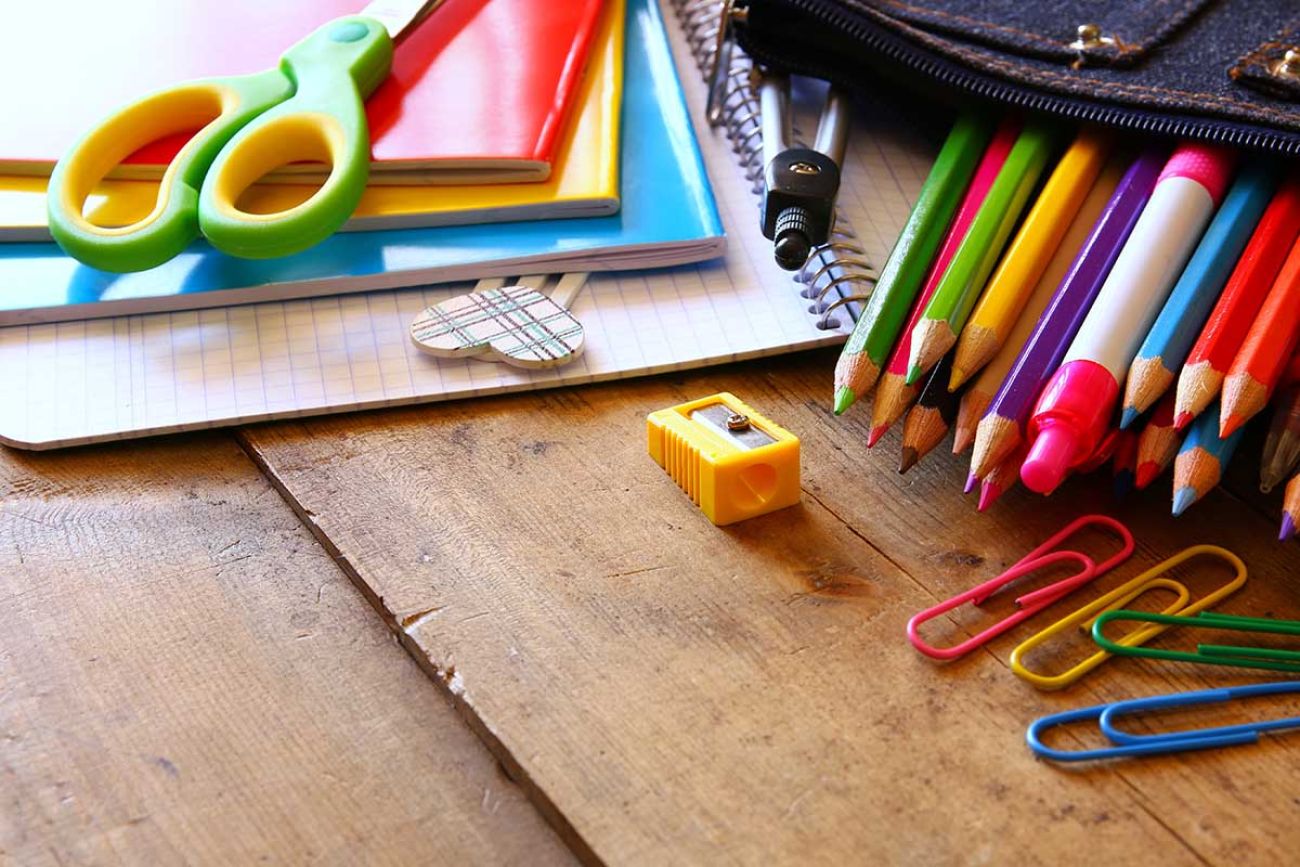Michigan teachers still scrounging for classroom supplies

- Teachers spend hundreds of dollars each year buying supplies for their classroom
- School districts supply basic necessities but parents are still asked to donate items like tissue and hand sanitizer
- Inflation pressures are straining families’ budgets as the cost of supplies has risen sharply
As Michigan students return to school, cold and flu season won’t be too far behind. So many teachers try to offset the spread of germs by stocking up on hand sanitizer and other cleaning supplies, often using their own funds to do so.
Paris Feiler, seventh grade teacher at Legacy Charter Academy in Detroit, told Bridge Michigan she spends about $250 a year on classroom supplies.
“This year, I created an Amazon Wish List for my birthday to get some of my family and friends to buy items for my classroom,” she said. “I have teacher friends in other districts and even other states … who have Amazon Storefronts.”
Back-to-school expenses (everything from clothes to notebooks and other school supplies) are among the highest yearly costs for many families. But teachers often have to reach even deeper into their own pockets — with two recent surveys showing the average U.S. teacher spends more than $800 of their own money annually on classroom supplies.
Parents are routinely asked to help reduce the burden by donating to classroom supply lists that might include wipes, sanitizer, tissue, pencils, erasers and expo markers for community use.
It’s a call many families expect to take on, but an expense that is straining more family budgets due to inflation following the pandemic, as the cost of school supplies rose 23.7 percent in the past two years, according to the U.S. Bureau of Labor Statistics’ Consumer Price Index.
In the Detroit Public Schools Community District, donations can be difficult to collect where more than 80 percent of the student population is economically disadvantaged and the median household income is $34,700, according to census data.
The district provides tissue, hand sanitizer, wipes, paper and pencils, but teachers coordinate with their principal to curate a classroom specific supply list to give to parents. Most of which includes some of these items.
“The district provides each teacher $100 to purchase items through School Specialty, ” Chrystal Wilson, assistant superintendent of communications for the district, said in an email.
Which leaves teachers like Feiler to find ways to collect the rest.
“Parents don’t complain about donating items but I have not had one parent donate,” Feiler said. “I even offer extra credit to students that bring in stuff … but the parents don’t bring in anything.”
Whose responsibility?
The state is required to provide students with the items they need to learn. And schools are receiving unprecedented financial support. Michigan schools received $6 billion from a succession of federal COVID relief packages including the American Rescue Plan Act, with low-income school districts receiving the most money.
And this year, Gov. Gretchen Whitmer signed a record $24.3 billion school budget, which among many things increased funding for each K-12 student to $9,608 for the 2023-24 school year.
But classrooms have a never-ending need for supplies. That means teachers are often left to address shortfalls by reaching out to nonprofits like AdoptAClassroom.org, corporations like Walmart, along with friends and strangers to crowdsource needed supplies.
DonorsChoose, a website used by public school teachers to collect donations to supply their classrooms, is another tool teachers use, similar to creating Amazon Storefronts.
The number of DonorsChoose projects created by Michigan teachers has continued to grow, from 961 projects in 2019 to 1,134 projects so far this year. Detroit, the largest school district in the state, has the most projects: 243, followed by Kalamazoo with 103.
East Lansing Public Schools received 500 backpacks filled with school supplies for middle and high school students from Communities in Schools, a Lansing-based organization committed to helping kids stay in school and TechSmith, a local business.
The district uses state funds to “provide all materials and supplies that students need for school,” said Dori Leyko superintendent for East Lansing Public Schools.
“Many of our families enjoy donating additional supplies to their children’s classrooms,” Leyko said.
Cynthia Robinson, 51 of East Lansing, said she spends about $50 each year on school supplies for her daughter, who is in sixth grade at MacDonald Middle School.
“The stuff that [teachers] want like Clorox, that stuff is expensive … and they ask for stuff like that,” she said. “I have to pay in cash and when I come out of pocket for stuff like that, it will hurt but I do it because it’s for my child.”
In neighboring Dewitt Township, Kelle Vicknail, 47, said she spends about $50 on school supplies at the beginning of the year and continues to donate items throughout the year.
“I don’t mind buying tissue, but I feel like the sanitation wipes and hand sanitizer should be provided,” Vicknail said. It would be nice to see the district provide more to help teachers like pens, pencils, staples and Wite-Out, items found on the school supply list, she added.
The Grand Rapids Public Schools Foundation hosts an annual supply drive to collect items for classrooms.
Parents in the more affluent Birmingham Public Schools are sent supply lists requesting donations, even though the district said it supplies all students with basic necessities.
Cortez Strickland, communications and marketing manager for the district, said many parents go out of their way to purchase supplies to ensure each student has what they need.
In Birmingham, about 10 percent of students are economically disadvantaged. The median household income is $138,000.
“l’ll give a big nod to our PTA organizations at school level because they go out and make sure that … schools are always heavily supplied with those types of things," Strickland said.
“So even though it may be on the school suggested supply list, those items are still heavily stacked within a school building already.”
Michigan Education Watch
Michigan Education Watch is made possible by generous financial support from:
Subscribe to Michigan Education Watch
See what new members are saying about why they donated to Bridge Michigan:
- “In order for this information to be accurate and unbiased it must be underwritten by its readers, not by special interests.” - Larry S.
- “Not many other media sources report on the topics Bridge does.” - Susan B.
- “Your journalism is outstanding and rare these days.” - Mark S.
If you want to ensure the future of nonpartisan, nonprofit Michigan journalism, please become a member today. You, too, will be asked why you donated and maybe we'll feature your quote next time!






